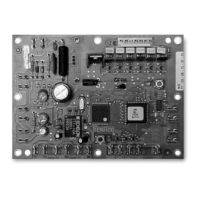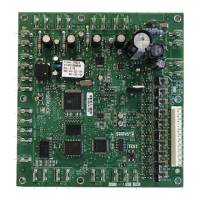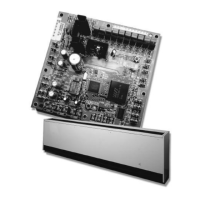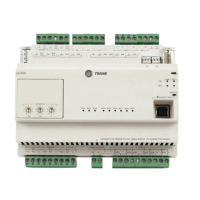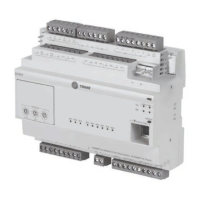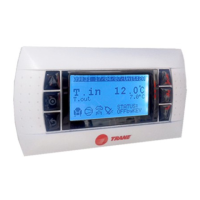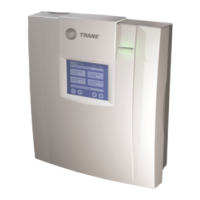Chapter 4 Sequence of operations for the 2-heat/2-cool configuration
20 CNT-SVX12C-EN
Cascade zone control
Cascade zone control maintains zone temperature by controlling the dis-
charge air temperature to control the zone temperature. The controller
uses the difference between the measured zone temperature and the
active zone temperature setpoint to produce a discharge air temperature
setpoint. The controller compares the discharge air temperature setpoint
with the discharge air temperature and calculates a unit heating/cooling
capacity accordingly (see Figure 8). The end devices (outdoor air damper,
valves, etc.) operate in sequence based on the unit heating/cooling capac-
ity (0–100%).
Figure 8. Cascade zone control
If the discharge air temperature falls below the Discharge Air Control
Point Low Limit (configurable using the Rover service tool) and cooling
capacity is at a minimum, available heating capacity will be used to raise
the discharge air temperature to the low limit (see “Discharge air temper-
ing” on page 24).
Simplified zone control
In the absence of a discharge air temperature sensor, the controller uses
simplified zone control to maintain the zone temperature. In the unoccu-
pied mode, the controller maintains the zone temperature by calculating
the required heating or cooling capacity (0–100%) according to the mea-
sured zone temperature and the active zone temperature setpoint. The
active zone temperature setpoint is determined by the current operating
modes, which include occupancy and heat/cool modes.
Occupancy modes
Occupancy modes can be controlled by any of the following:
• The state of the local (hard-wired) occupancy binary input BI1 (see
“BI1: Occupancy or generic” on page 50)
• A timed override request from a Trane zone sensor (see “Timed over-
ride control” on page 22)
Active zone
temperature
setpoint
Difference
Calculated
discharge air
temperature
setpoint
Calculated unit
heating/cooling
capacity
Measured
zone
temperature
Measured
discharge air
temperature
Difference
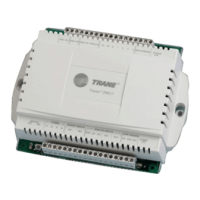
